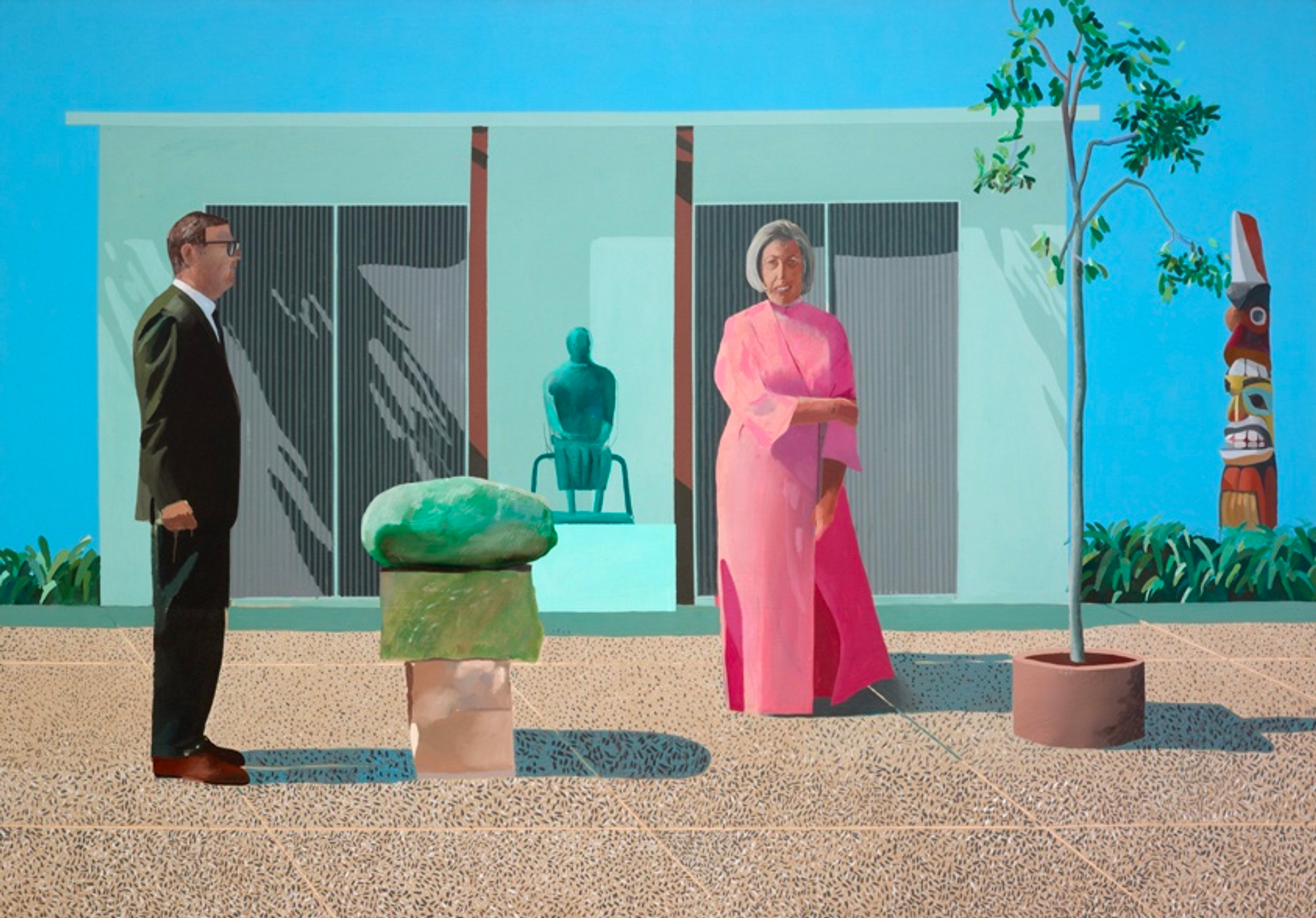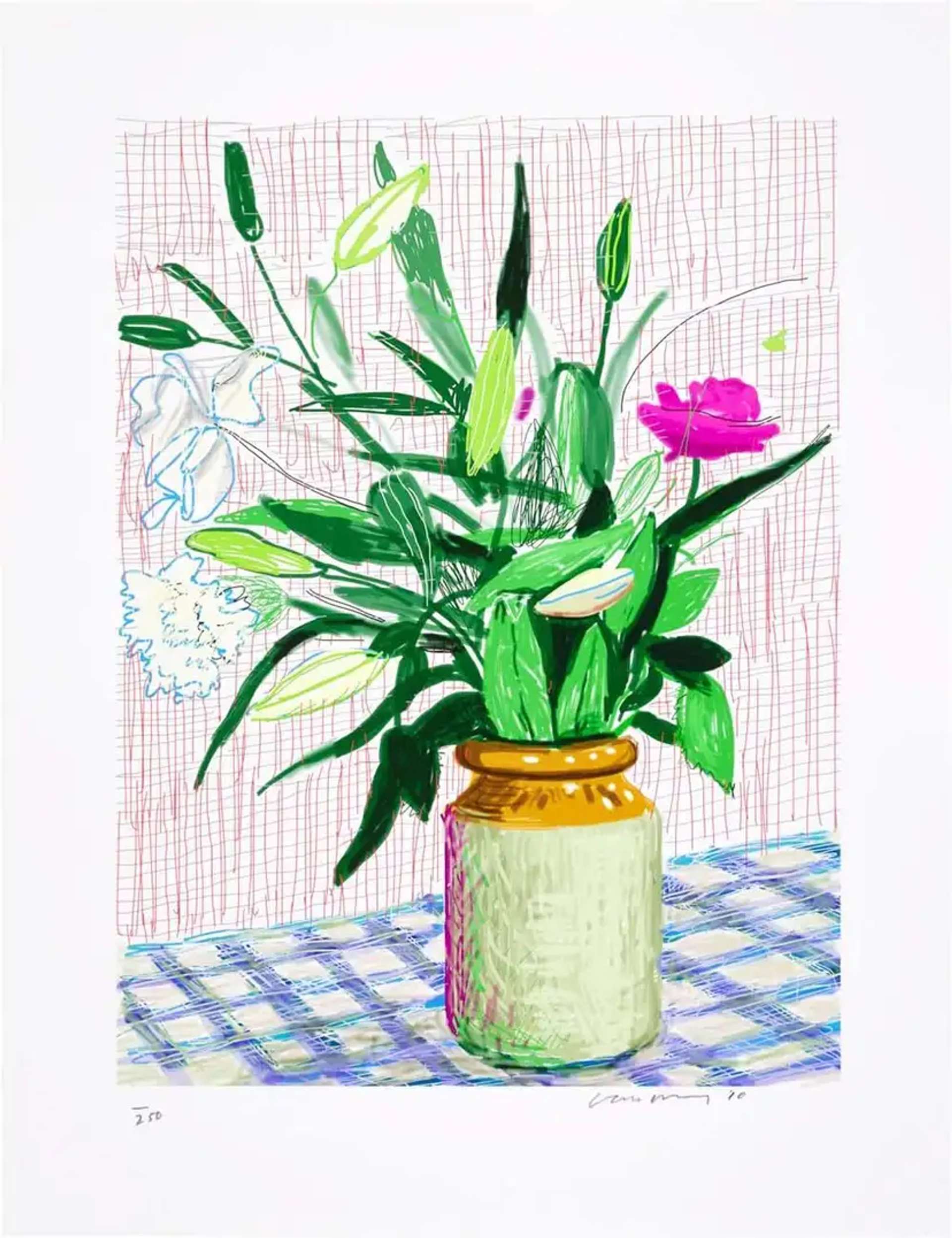 Big Celia Print #3 © David Hockney 1981
Big Celia Print #3 © David Hockney 1981
David Hockney
651 works
In the world of modern art, the concept of the muse transcends mere inspiration. From the romanticised ideals of the Renaissance to the avant-garde movements of the 21st, the muse has remained a pivotal – though ever-evolving – figure in the artistic realm. Often perceived through a lens tinted with notions of love, beauty, and mystery, the modern muse is much more than a passive subject of adoration. Gone are the days when muses were merely silent figures in the background. In the modern era, they emerge as collaborators, intellectual partners, and even provocateurs, actively participating in the creative process.
Muses reflect not only the personal inclinations of the artist but also embody broader cultural narratives and social movements. Much has changed since Pablo Picasso's transformative companions, which becomes evident when one considers David Hockney's muse, Celia Birtwell; she has transcended her immediate role to influence an entire artistic period. In exploring the multifaceted roles Birtwell plays in Hockney’s art, we also confront the changing gender dynamics and the expanded notion of what a muse can be.
The Role of Muses in Modern Art
Traditionally, a muse in the arts has been a source of inspiration, typically embodied by a person who stimulates the creative energies of an artist. Historically, muses have been romanticised or idealised figures – sometimes lovers or close companions of the artists. In modern and contemporary art, however, the concept of the muse has evolved and expanded. Today, the muse is not restricted to a traditional romantic or passive role: muses are often partners and collaborators, not only inspiring but actively contributing to the creative process. The relationship between artist and muse can be deeply personal, professional, or a complex blend of both.
The narrative of the muse in art history has often been gendered, with female muses serving male artists. However, in the modern era, this dynamic has been challenged and reinterpreted. Artists have brought attention to their own muses, who might be male, female, or non-binary, thus diversifying the narrative. Muses in modern art extend their influence beyond just the artworks, often affecting the artist's approach, style, and the themes they explore. Birtwell, as a muse to Hockney, has not just inspired specific works but also influenced the overall tone and style of his art during the past few decades.
Celia Birtwell: The Face That Launched A Thousand Prints
Birtwell was born in 1941 in Prestwich, Lancashire, England. Growing up in a time of post-war austerity, Birtwell found solace and inspiration in the world of art and design. She enrolled at a textile design course at the Salford School of Art in 1956, and shortly after met the designer Ossie Clark – an emerging figure in the fashion world and her future husband. It was through him that she first met Hockney: unlike many artists before him, Hockney’s admiration for Birtwell did not grow from a sexual infatuation. Openly homosexual, he was actually originally intrigued by Clark, although this would shift in the coming years. When he finally clicked with Birtwell, it was the beginning of a lifelong friendship, over the course of which she has sat for Hockney over eighty times.
Birtwell's career began in earnest in 1961, when she moved to Notting Hill, London; she quickly became immersed in the city's burgeoning fashion scene and married Clark, who would become well-known for his quintessential 1960s and 1970s designs. Together, they became an iconic duo in the British fashion world. Birtwell's collaboration with Clark is perhaps one of her most notable contributions to fashion: she designed prints for his flowing, romantic garments, which were adored by celebrities and fashionistas alike. Her designs were characterised by their whimsical yet sophisticated floral and abstract patterns, combining a sense of playfulness with elegance.
After the couple’s separation in the 1970s, Birtwell continued to make her mark in the world of textile design as she ventured into her own business, showcasing her talent for creating fabrics that combined artistic flair with practical appeal. Her work has been featured in various fashion and interior design contexts, maintaining a balance between artistic integrity and commercial success. Throughout her career, Birtwell has received numerous accolades and recognition for her work. Today, she continues to inspire new generations of designers and artists, remaining active in the industry through various collaborations and projects.
The Evolution of a Muse: Birtwell Through the Years
Hockney’s portraits of Birtwell are not just of a muse, but rather of a friendship. Birtwell first sat for Hockney in 1968, shortly after they became friends through Hockney’s boyfriend (and also muse) Peter Schlesinger. A few years later, Birtwell and Clark sat for one of Hockney’s most famous paintings, the 1970-1971 masterpiece Mr And Mrs Clark And Percy, now in the collection of the Tate. It depicts the couple shortly after their marriage (for which Hockney acted as best man), in their Notting Hill apartment. A white cat is perched on Clark’s lap – truly called Blanche, Hockney took the creative liberty of using their other cat’s name, Percy, on the painting’s title. In the work, an etching from his earlier series A Rake’s Progress can be seen hanging on their wall.
Since then, Hockney continued to paint Celia throughout the seasons of both their lives; her portraits account for roughly one quarter of the entirety of his printed portraits. In the 1980s, she was also a model for his photography phase, deeply influenced by Cubism. Birtwell has spoken of the difficulty of seeing oneself age through the lens of an artist: “It’s made me very wary! When I was young, the drawings were lovely. But as he says, we’re all getting older, so you’re going to see something that’s possibly quite, ‘Oh wow’.” The two friends nearly fell out because of a portrait done in November 2019, which saw Birtwell seated in a wicker chair.
In a move that further solidifies her status as the ultimate Hockney muse, one of Hockney’s portraits of Birtwell was selected as the main press release image for his latest show at the National Portrait Gallery, David Hockney: Drawing From Life. Notably, the exhibition is the first to highlight the artist’s drawings in over 20 years, and features around 150 portraits – which are only of five people. The Guardian noted: “A show of Hockney portraits without Birtwell would have felt as wrong as a celebration of Da Vinci without the Mona Lisa.”
Celebrating the Birtwell-Hockney Artistic Era
Historically, muses often reflect the cultural and social milieus from which they emerge. They can embody the aesthetics, values, and themes of an era. In modern art, the role of the muse is dynamic, even as the muse remains a central figure in the creative process. Nowadays, their role is far more varied and complex than the traditional notions of inspiration: they are not just subjects or objects in art, but are often active participants, collaborators and significant influencers in the realm of artistic creation. Birtwell is an excellent example of this.
Birtwell's legacy in both the fashion and art worlds is significant. She is celebrated not only as a muse but also as a creator, whose distinctive style has left a lasting impression. Her influence extends beyond her collaboration with Ossie Clark and her role as Hockney's muse – it encompasses a broader contribution to the textile and fashion design industry. Within the world of Hockney’s art, she has been deeply instrumental in shaping it. Their collaboration is more than a mere intersection of two creative minds. Rather, it is a symphony of style, personality and artistic expression that has resonated far beyond the confines of their individual works. Birtwell, with her whimsical and intricate textile designs, and Hockney, with his vivid and emotive portraiture, together encapsulated the spirit of an era.
Birtwell and Hockney, each a titan in their respective fields, came together to create a legacy that continues to captivate and inspire. Their work, symbiotic and harmonious, reflects the vibrancy and dynamism of the times they live in. The iconic images of Birtwell that emerged from Hockney's capture the essence of the 60s and 70s, an era that was more than just fashion and art: it was about breaking barriers and setting new paradigms. The Birtwell-Hockney collaboration challenged traditional notions of muse and artist, infusing their work with a unique intimacy and depth. Their joint legacy is a testament to the power of creative partnerships, demonstrating how two distinct art forms - fashion and painting - can intertwine to produce something truly extraordinary.










